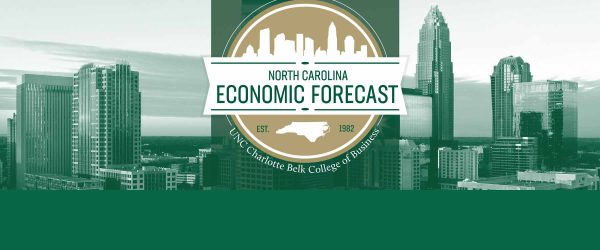Bank failure prompts questions on inflation, interest rate hikes

The recent Silicon Valley Bank closure by regulators is the latest shockwave through the financial system, which adds another level of complexity as the Federal Reserve fights inflation.
The Fed began implementing the recent string of interest rate hikes in March 2022 to slow the pace of increasing inflation. John Connaughton, director of the North Carolina Economic Forecast, said the Fed will need to consider the financial industry’s stability while fighting inflation in 2023.
“The failure of Silicon Valley Bank has brought into question future interest rate hikes. In the short term, the Fed is going to have to balance the need to increase interest rates to fight inflation with the increased risk to the financial sector associated with higher interest rates,” Connaughton said.
“For now, the Fed has stemmed systemic risk by creating a lending facility that effectively insures all banking deposits. That action is quantitative easing in essence and is contradicting the Fed’s inflation fight.”
The First Quarter 2023 North Carolina Economic Forecast, sponsored by LPL Financial, was held virtually and in person Thursday March 16. The forecast included presentations by Connaughton and Jeffrey Roach, senior vice president and chief economist for LPL Financial, as well as a panel discussion between Connaughton and Roach.
Roach said the SVB collapse is an isolated problem in the financial system. He does not expect to see other banking failures this year.
“This is a concentrated issue for under-diversified financial firms insufficiently hedged against rising rates,” he said.
The Belk College of Business released its First Quarter North Carolina Economic Forecast Report Thursday; it is available at belkcollege.charlotte.edu/forecast.
Gross Domestic Product Analysis
North Carolina’s real (inflation-adjusted) Gross Domestic Product (GDP) is expected to increase by 1.6% over the 2022 level in 2023, according to the report.
For 2023, 12 of the state’s 15 economic sectors are expected to experience output increases, with agriculture projected to see the strongest growth at 17.6%.
Other top growth sectors for 2022 are expected to be:
- Mining: 6.2%
- Information: 6.0%
- Hospitality and leisure services: 4.6%
- Health and education services: 4.0%
Three sectors — finance, insurance and real estate; government; and transportation, warehousing and utilities — are expected to experience growth below the projected GDP growth of 1.6%.
Employment
According to the report, all 14 nonagricultural sectors are expected to experience employment increases during 2023. The sectors with the strongest expected employment increases in 2022 are:
- Information: 5.8%
- Mining: 5.6%
North Carolina employment is expected to reach 4,920,700 persons by December 2023, a 1.5% increase over the December 2022 employment level. The state is expected to add 74,300 net jobs in 2023.
North Carolina’s unemployment rate, which fell halfway through 2022 but rose to 3.9% by December, is expected to remain steady in 2023, closing out the year at 3.9%.
The North Carolina Forecast, which began in 1982, is published quarterly by UNC Charlotte’s Belk College of Business. The full report and a recording of the presentation will be available at belkcollege.charlotte.edu/forecast.
The Second Quarter 2023 North Carolina Economic Forecast Report will be released in May.